新年手抄报内容英语
在各个领域,大家都接触过不少的手抄报吧,手抄报必须在内容上突出一个主题,做到主题突出,又丰富多彩。还在苦苦寻找优秀经典的手抄报吗?下面是小编收集整理的新年手抄报内容英语,欢迎大家分享。
新年手抄报内容英语
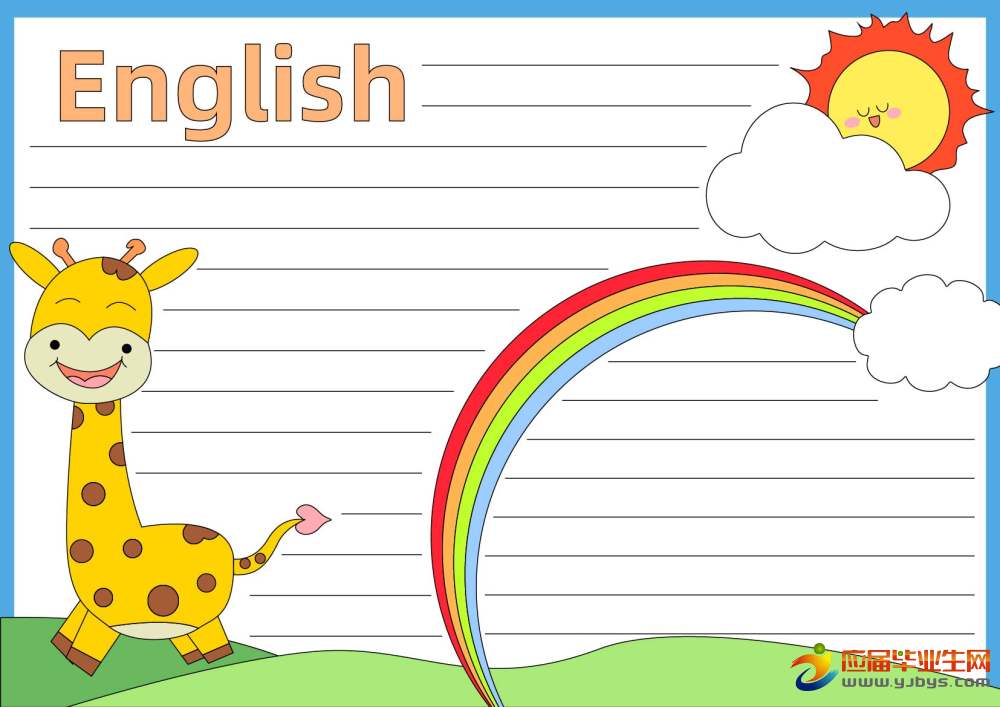
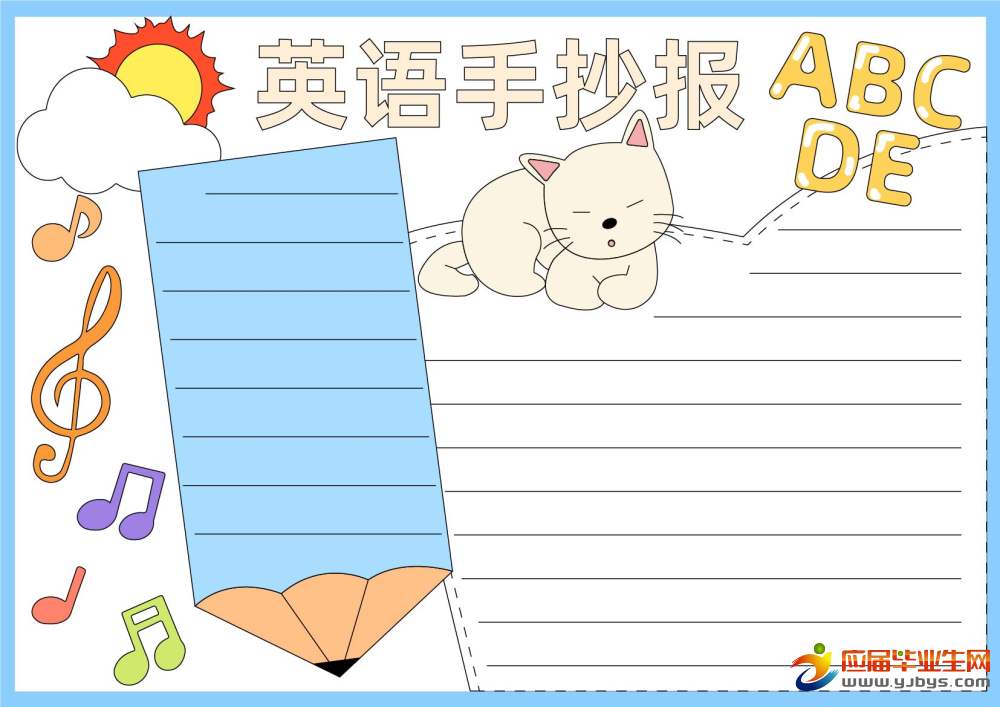
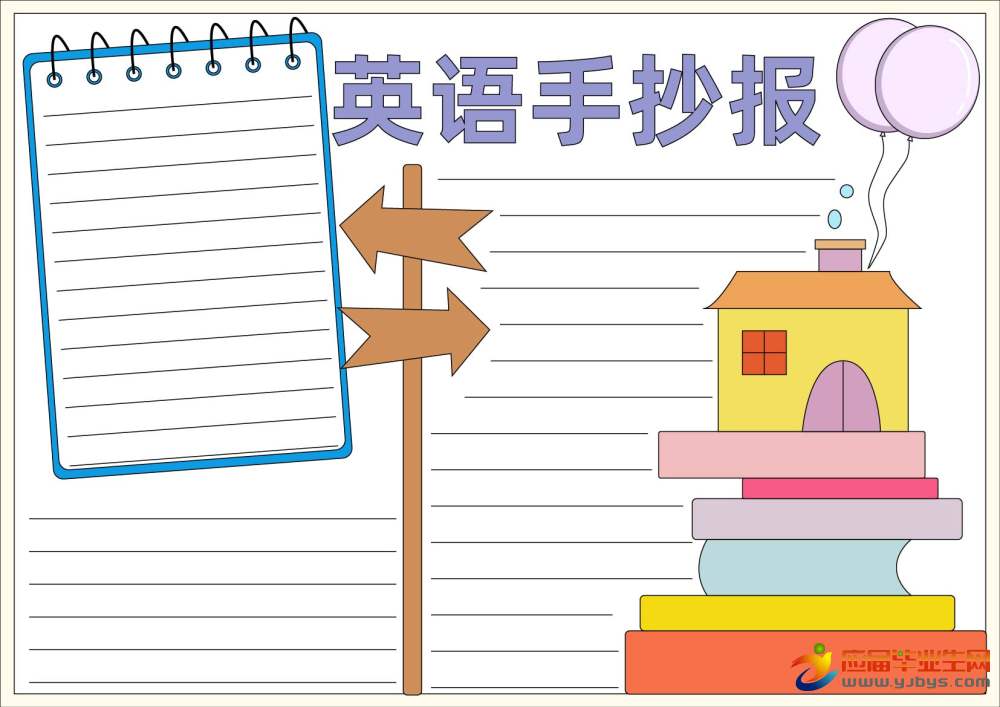
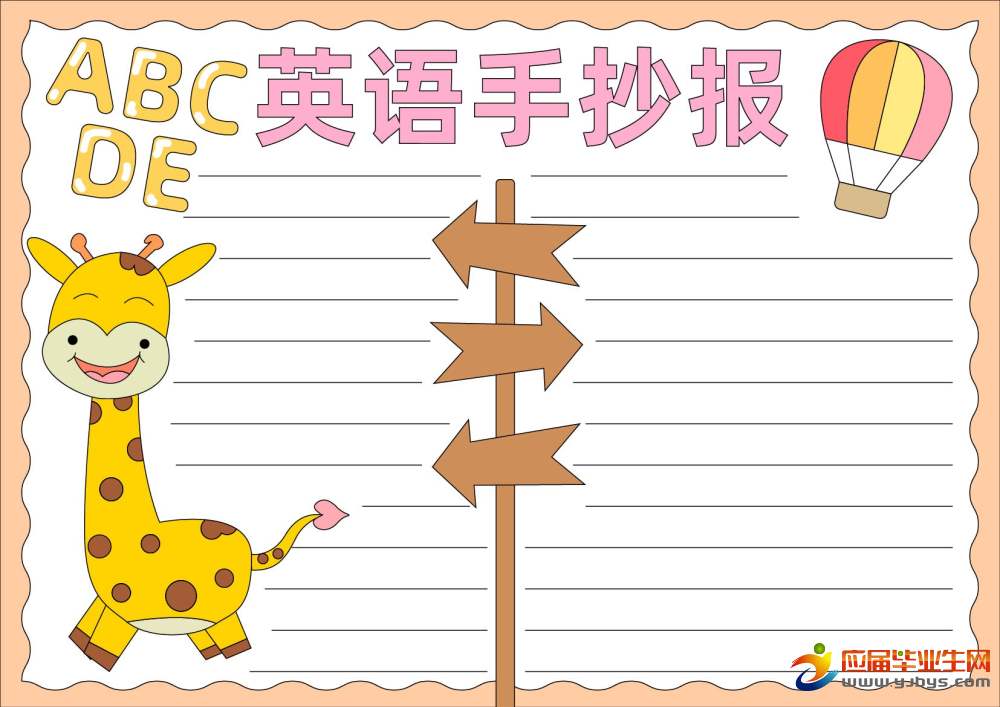
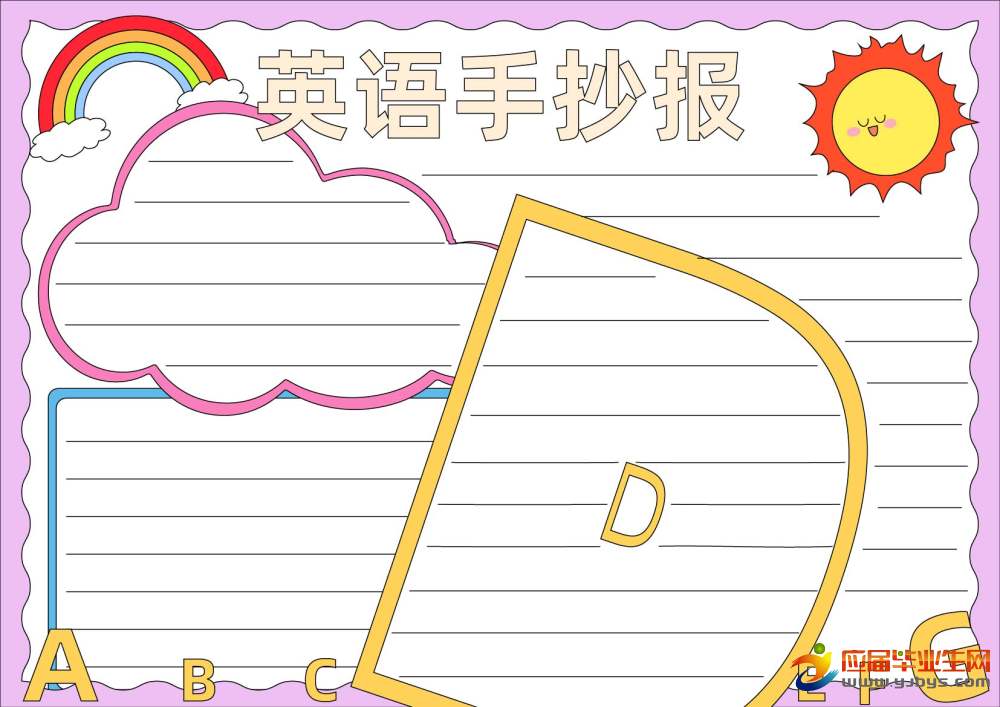
春节习俗英文简介Customs of the Spring Festival
The Spring Festival is a traditional Chinese festival and also the most important one of the whole year. Through the evolvement of thousands of years, a series of customs are spreading far and wide.
1、扫尘 Sweeping the Dust
“Dust” is homophonic with "chen”in Chinese, which means old and past. In this way, "sweeping the dust” before the Spring Festival means a thorough cleaning of houses to sweep away bad luck in the past year. This custom shows a good wish of putting away old things to welcome a new life. In a word, just before the Spring Festival comes, every household will give a thorough cleaning to bid farewell to the old year and usher in the new.
2、贴春联 Pasting Spring Couplets
“The Spring Couplet”, also called "couplet” and "a pair of antithetical phrases”, is a special form of literature in China. The Spring Couplet is composed of two antithetical sentences on both sides of the door and a horizontal scroll bearing an inscription, usually an auspicious phrase, above the gate. The sentence pasting on the right side of the door is called the first line of the couplet and the one on the left the second line. On the eve of the Spring Festival, every household will paste on doors a spring couplet written on red paper to give a happy and prosperous atmosphere of the Festival. In the past, the Chinese usually wrote their own spring couplet with a brush or asked others to do for them, while nowadays, it is common for people to buy the printed spring couplet in the market.
3、贴窗花和“福”字 Pasting Paper-cuts and "Up-sided Fu”
Paper-cuts, usually with auspicious patterns, give a happy and prosperous atmosphere of the Festival and express the good wishes of Chinese people looking forward to a good life. In addition to pasting paper-cuts on windows, it is common for Chinese to paste the character "fu(福)”, big and small, on walls, doors and doorposts around the houses. "Fu(福)” shows people’s yearning toward a good life. Some people even invert the character "fu(福)” to signify that blessing has arrived because "inverted” is a homonym for "arrive” in Chinese. Now many kinds of paper-cuts and "fu(福)” can be seen in the market before the Festival.
4、守岁 Staying Up Late on New Year‘s Eve
The tradition of staying up late to see New Year in originated from an interesting folk tale. In ancient China there lived a monster named Year, who was very ferocious. Year always went out from its burrow on New Year’s Eve to devour people. Therefore, on every New Year’s Eve, every household would have supper together. After dinner, no one dared go to sleep and all the family members would sit together, chatting and emboldening each other. Gradually the habit of staying up late on New Year’s Eve is formed. Thus in China, "celebrating the Spring Festival” is also called "passing over the year (guo nian)”。 However, now there are less and less people in cities who will stay up late to see New Year in.
5、贴年画 Pasting New Year Prints
The custom of pasting New Year Prints originated from the tradition of placing Door Gods on the external doors of houses. With the creation of board carvings, New Year paintings cover a wide range of subjects. The most famous ones are Door Gods, Surplus Year after Year, Three Gods of Blessing, Salary and Longevity, An Abundant Harvest of Crops, Thriving Domestic Animals and Celebrating Spring. Four producing areas of New Year Print are Tɑohuɑwu of Suzhou, Yɑngliuqing of Tianjin, Wuqiɑng of Hebei and Weifang of Shangdong. Now the tradition of pasting New Year paintings is still kept in rural China, while it is seldom followed in cities.
6、吃饺子 Having Jiaozi
On New Year’s Eve, the whole family will sit together to make jiaozi and celebrate the Spring Festival. The shape of jiaozi is like gold ingot from ancient China. So people eat them and wish for money and treasure. The tradition of having jiaozi is very important during the Spring Festival. You cannot have a complete Spring Festival without having jiaozi. (See page 82 for more information about "jiaozi”)
7、看春节联欢晚会 The CCTV New Year‘s Gala
The New Year’s Gala is a variety show held by China Central Television (CCTV) since 1983. For every year since then at the turn of the Lunar New Year, the program begins at 8:00PM and lasts five or six hours. It brings laughter to billions of people, creates many popular words and produces lots of TV phenomena meriting attention. For over twenty years, its value has gone far beyond a variety show. It is essential entertainment for the Chinese both at home and abroad. Many Chinese would like to watch the gala while having the dinner on New Year’s Eve.
8、放鞭炮 Setting off Firecrackers
The firecracker is a unique product in China. In ancient China, the sound of burning bamboo tubes was used to scare away wild animals and evil spirits. With the invention of the gunpowder, "firecracker” is also called "鞭炮biānpào” (“炮” in Chinese means gun) and used to foster a joyful atmosphere. The first thing every Chinese household does is to set off firecrackers and fireworks, which are meant to bid farewell to the old year and usher in the new. In the past few years, such an activity was completely or partially forbidden in big cities including Beijing due to fire and personal casualty caused by burning firecrackers. However, some Chinese thought that a Spring Festival without firecrackers was not lively enough and they burned firecrackers by stealth. So in recent years, the ban was canceled again. This shows that burning firecrackers is a very important activity during the Spring Festival.
9、拜年和压岁钱 New Year‘s Visit and Gift Money
On the first day of the Chinese lunar year, everybody puts on their best clothes and pays ceremonial calls on their relatives and friends, wishing them all the luck in the coming year. Juniors will greet seniors, wishing them health and longevity, while seniors will give juniors some gift money as a wish for their safety in the coming year. When friends meet, they will wish each other happiness and prosperity with a big smile. With the development of the new technology, there is a change on the way of giving New Years greetings. In recent year, it is common to send New Years greetings by such modern means of communication as telephones, emails and text messages.
10、逛庙会 Temple Fair
Temple fair, usually held outside temples, is a kind of folk custom in China. During the Spring Festival, temple fair is one of the most important activities, in which there are such performances as acrobatics and Wushu, numerous kinds of local snacks and many kinds of things for everyday life. In recent years, the temple fair has become a place for people to appreciate the traditional art and experience the traditional life.
新年诗歌
New Years Thoughts
The fiery red dawn
Refreshed
A cycle of reincarnation
In the season of heavy snow
Once again
Playing passionate and tumultuous notes
Once again
Touching the deep wrinkles of the plow
perhaps
Sorrow and expressionlessness
perhaps
Tears streaming down thousands of lines
friend
Raise your face
right
Raise high and high
Let the warm sunshine shine
Melting the snow deep in the mountain mist
Let the brave tremble
Breaking through the thick and firm ice
Dont worry
Patient listening
The surging spring tide is moving forward
Attacks in areas with strong winds and snow
We need to be in a new cycle
Dream the most beautiful dream
In the most beautiful morning glow
Towards the depths of the flower sea
In the most beautiful morning glow
Print a smile on
On the commemorative book of time
The fiery red dawn
Ignite
A magnificent conjecture
In the season when water turns into ice
Dreams, full of resilient power
To break through the hard ice
Reached out his hand
Touching my mothers weathered old face
perhaps
In the dust years of the past
Sad and desolate
perhaps
Confused shouting
These are all blown away by the wind
Extend your hand
right
Raise high and high
Let the sunshine restore frozen dreams
Transformed into a fresh and tender bud
Beautiful tremors in the cold wind
Under the eaves
Patient listening
That sweet spring song
Walking towards the place of wind, flowers, snow, and moon
We need to be in a new cycle
Waving the most beautiful wings
In the bluest sky
Overlooking the sea and mountains
In the most beautiful world
Embed emoticons
The Smile of Time
新年作文 1
The Spring Festival, also known as "Chinese New Year", is the first day of the first lunar month every year.
On this festival, people will have customs such as posting, setting off firecrackers, and paying respects to the Chinese New Year, creating a festive atmosphere. In fact, there is a touching legend about "celebrating the Chinese New Year".
Long, long ago, there was a monster called "Nian". On the first day of the Lunar New Year, "Nian" is rampant and harms the people, making them afraid to go out. A grandfather discovered that "Nian" was very afraid of red and noise, and this kind-hearted grandfather shared this surprising discovery with everyone. So one day, "New Year" came again. People pasted big red paper on their doors, played drums and pots, and made a huge noise. The monster "New Year" was scared away. The next morning, people greeted each other, congratulated each other, and celebrated that everyone had passed the "New Year". Later, pasting big red paper and beating drums and pots evolved into pasting and setting off firecrackers. Mutual greetings and congratulations have evolved into New Year greetings.
This custom has been passed down, adding a joyful and peaceful atmosphere to the Spring Festival, while also expressing peoples beautiful aspirations for the new year.
新年作文 2
The origin of the Spring Festival is very, very long. Do you want to learn about it? Then follow me!
The Spring Festival is the first day of the first lunar month, also known as the Lunar New Year, commonly known as the "Chinese New Year". This is the most solemn and lively traditional festival among the people in our country. The history of the Spring Festival is very long. It originated from the worship of gods and ancestors at the beginning and end of the year in the Yin and Shang dynasties. According to the Chinese lunar calendar, the first day of the first lunar month was formerly known as New Years Day, Yuanchen, Yuanzheng, Yuansu, Yuanri, etc., commonly known as the first day of the year. During the Republic of China period, the Gregorian calendar was used instead. The first day of the first lunar month is called New Years Day, while the first day of the first lunar month is called Spring Festival.
Before the Spring Festival, every household prepares New Years goods. Around ten days before the holiday, people began to be busy purchasing goods. New Years goods include chicken, duck, fish, meat, tea oil, soy sauce, stir fried goods from north and south, candies, etc., and some gifts given to family and friends during the Chinese New Year. Children need to buy new clothes and hats to wear during the Chinese New Year.
The Spring Festival is still a joyful and peaceful day, symbolizing the sweetness and progress of life in the new year!
I think the Spring Festival not only brings a good start to our future lives, but also brings happiness and peace to everyone! I love Spring Festival!
【新年手抄报内容英语】相关文章:
新年手抄报英语内容12-18
英语新年的手抄报内容01-29
庆新年英语手抄报内容07-07
英语元旦手抄报内容01-04
英语元旦的手抄报的内容11-09
元旦手抄报内容英语01-03
元旦英语手抄报内容06-20
英语新年手抄报内容(精选50篇)02-02
新年手抄报英语内容及图片设计07-06
英语元旦手抄报内容大全12-27